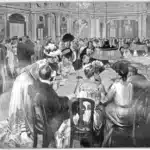The Origins of Gambling – The History
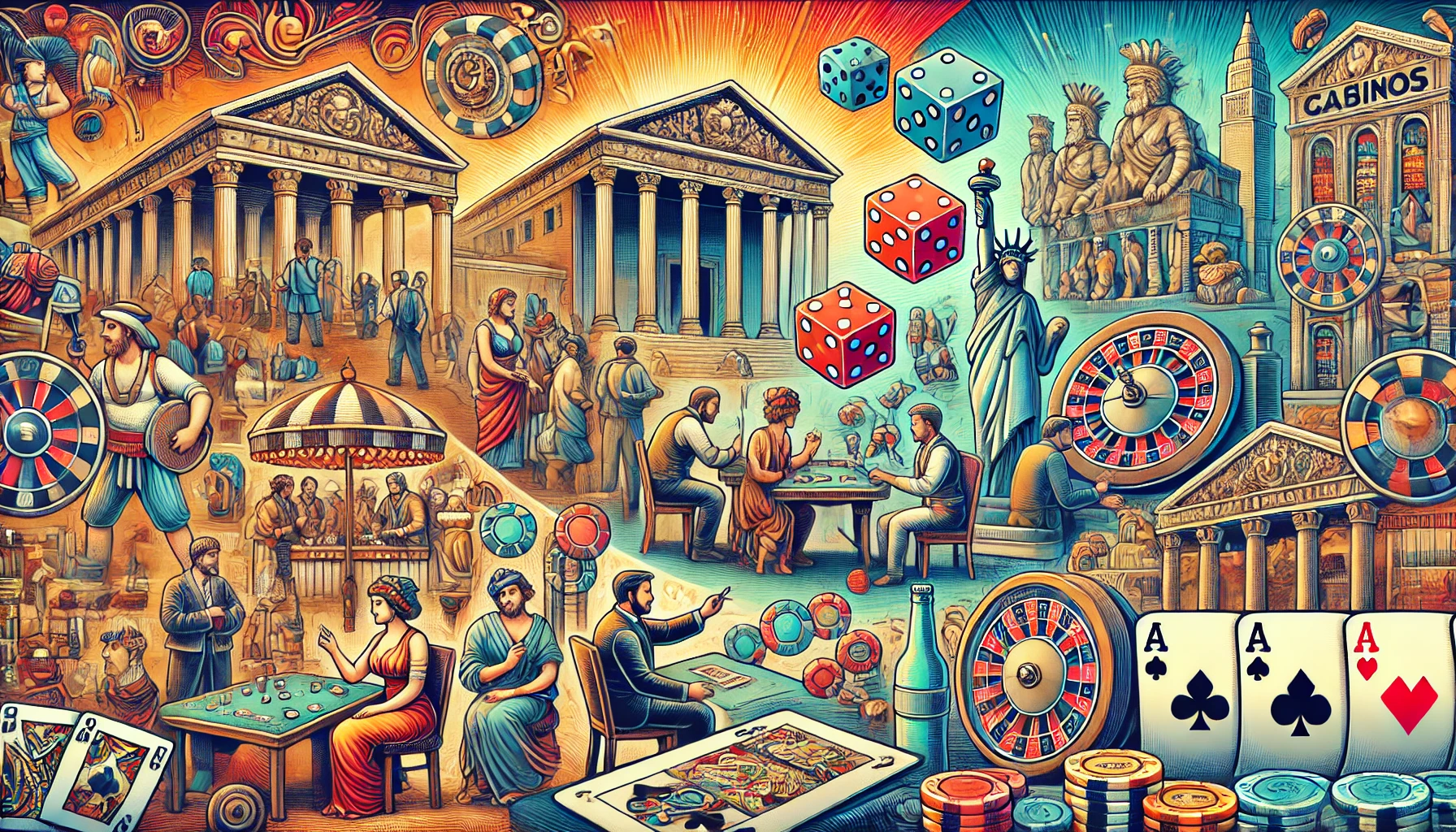
Last Updated on June 26, 2025 by Mary Henderson
Get ready because today we’re gonna go through the history of gambling – from its origins and way through the modern times we live today.
Have you ever wondered how it all started – the thrill of placing bets, the intriguing anticipation, and the excitement of hitting the jackpot?
To your surprise, gambling didn’t set off centuries, but thousands of years ago, back to ancient times, history tells us.
Just imagine Ancient Romans and Greeks rolling the dice and placing bets the same way you do today, yet in a totally different context. The history of gambling gets even more interesting as it goes on.
As a seasoned professional with first-hand expertise in everything gambling, I’m taking you today on an adventurous journey through the history of gambling and its origins.
Let’s follow the roll of dice through time!
Ancient Times: Origins of Gambling
3000 BCE: First Dice in Mesopotamia
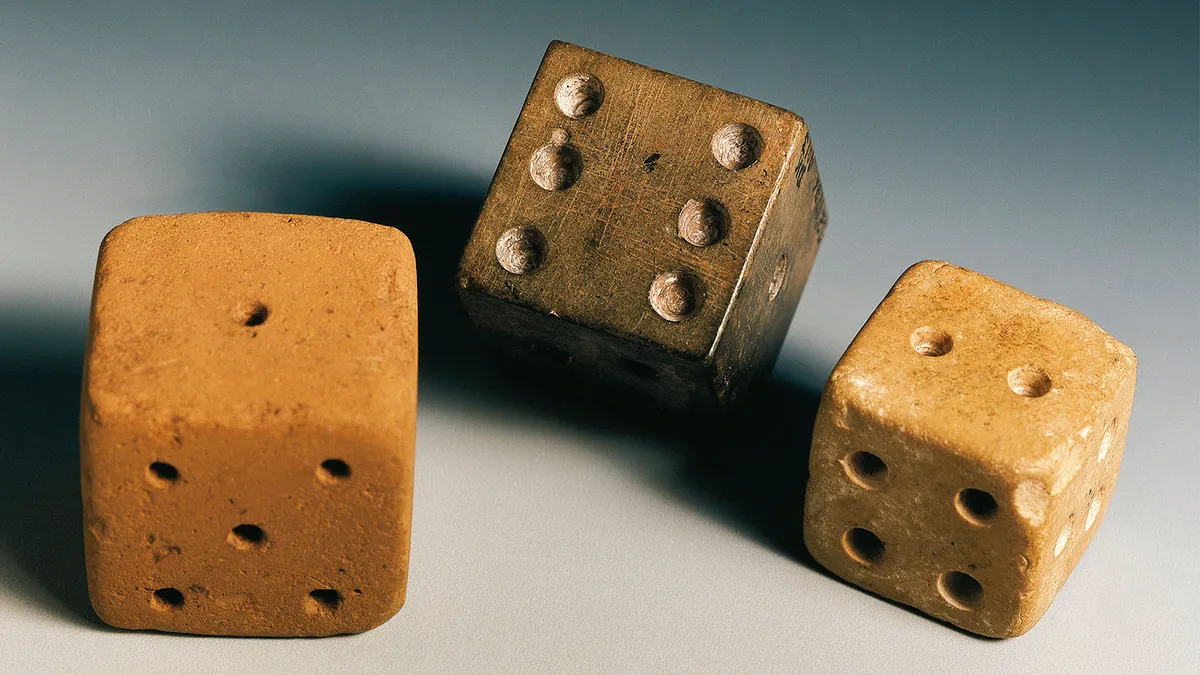
As modern as this concept sounds, gambling has its origins in ancient Mesopotamia. You may wonder how we know that. Well, the earliest dice were discovered there. Can you imagine dice made of stone and bone? That’s what they looked like back then.
The Sumerians, one of the most advanced civilizations of that time, marked the beginning of gambling. They are believed to have been using these dice to play various games of chance.
2000 BCE: Keno in China
As the history goes on, we move to the east and reach China. Gambling took root here around 2000 BCE. Archeologists found evidence of keno-like lottery games there. Can you believe the Chinese used these games to fund the Great Wall of China? I told you it gets more interesting as we go further.
It’s impressive to acknowledge that gambling has always been connected to the development of society and not just a way to pass the time.
500 BCE: Rome and Greece
We switch to Ancient Rome and Greece now. Everybody knows that Romans and Greeks were pretty competitive, and gambling was the perfect means of expressing their adventurous spirits. Here, gambling was a popular pastime. Players enjoyed the same games of dice, early versions of backgammon, and something new – they bet on animal fights.
100 BCE: Roman Empire
During this time, gambling took center stage in the great Empire that Rome was back then. Romans started using terms such as “tesserae,” which meant dice, and “tabula,” which meant board game. Gambling went as far as reaching Roman soldiers who enjoyed rolling the dice during long military campaigns.
The Middle Ages: Gambling Condemned
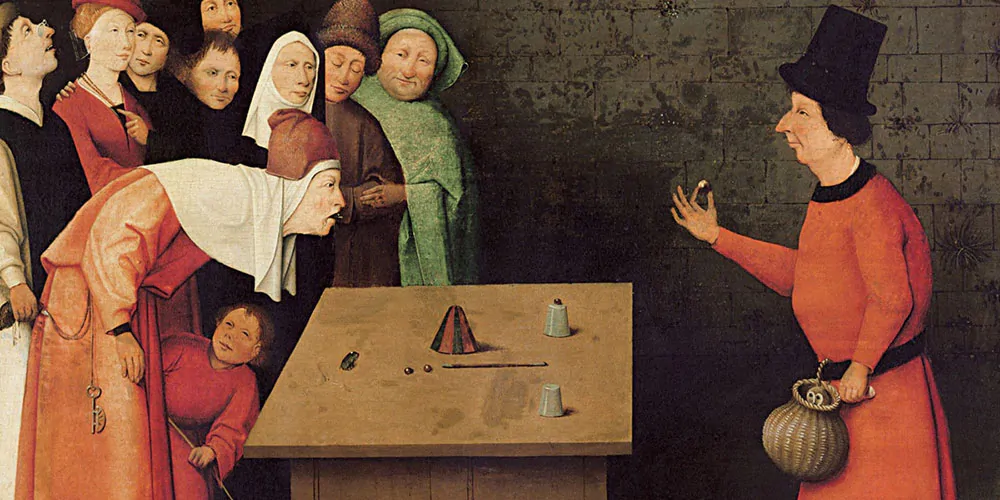
500-1500 CE: Scrutiny
As one era ends, another begins, and gambling takes new turns. The Middle Ages were not the best time for games of chance. Gambling quickly came under the scrutiny of the Catholic Church.
Despite the authorities’ disapproval, secretive gatherings continued to play games of chance, including dice and card games.
1400: Introduction of Cards
We are back in China, where playing cards originated and spread to Europe. Due to trade routes, cards became mainstream.
Did you know that the card games you enjoy today, like poker and blackjack, started with the French deck with suits of spades, hearts, diamonds, and clubs?
The Renaissance: A Shift in Gambling
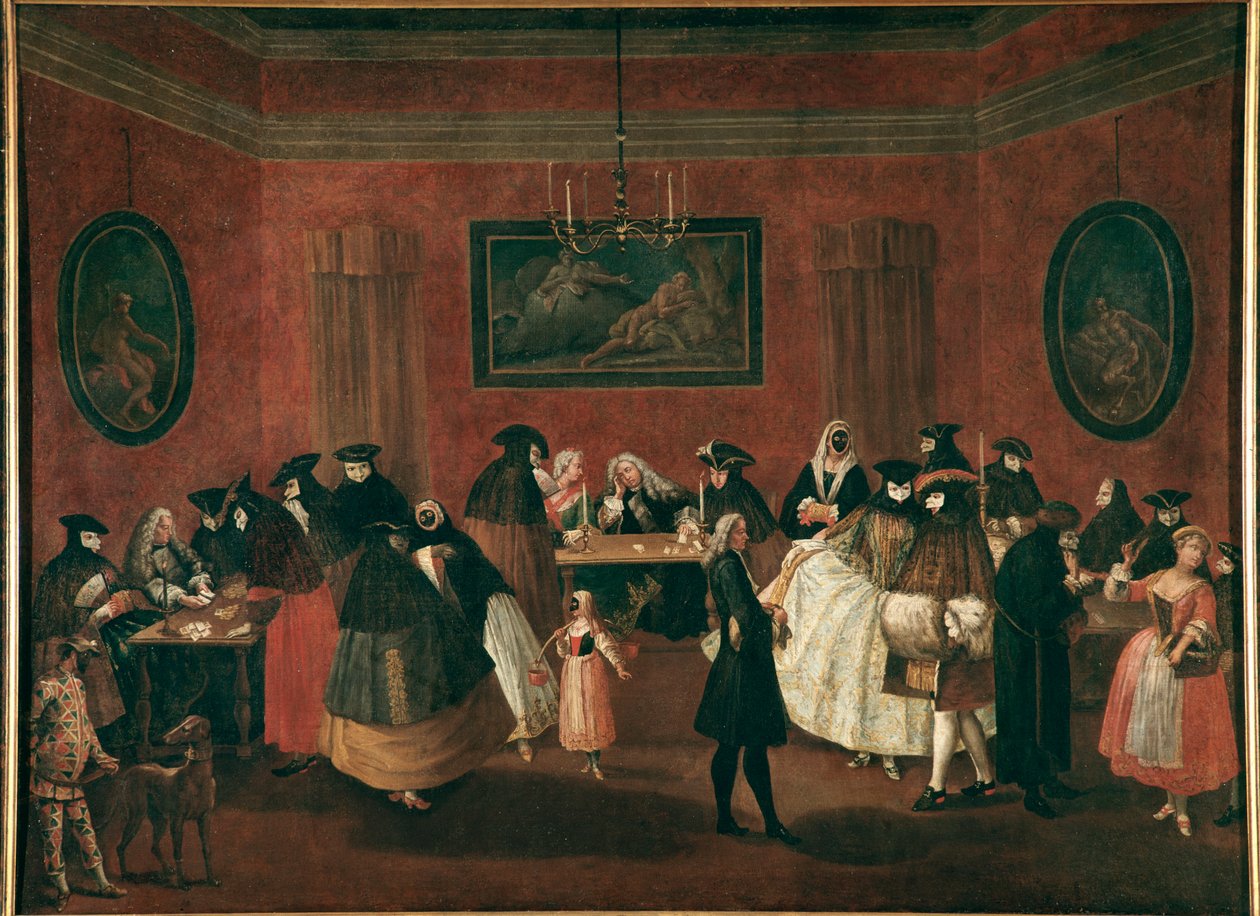
1600: The Enlightenment in Gambling
Together with the cultural shift, the new era marked the beginning of gambling houses. To your interest, the first official casino was established in Venice, Italy, in 1638 (no, it was not Las Vegas – later on that).
The so-called “Ridotto” casino was a huge turn for gambling, showing how society had changed its attitude towards games of chance. In these gambling houses, patrons and gamblers could benefit from a regulated environment.
1700: The Odds of Chance
The Age of Enlightenment also meant a change in gambling. Like in other cultural fields, philosophers started to view gambling from a more analytical perspective. Mathematicians like Blaise Pascal pioneered probability theory, which helped understand the odds behind gambling.
The first state lotteries appeared in England and France. They even funded public projects.
19th Century: Gambling Lands on the New World
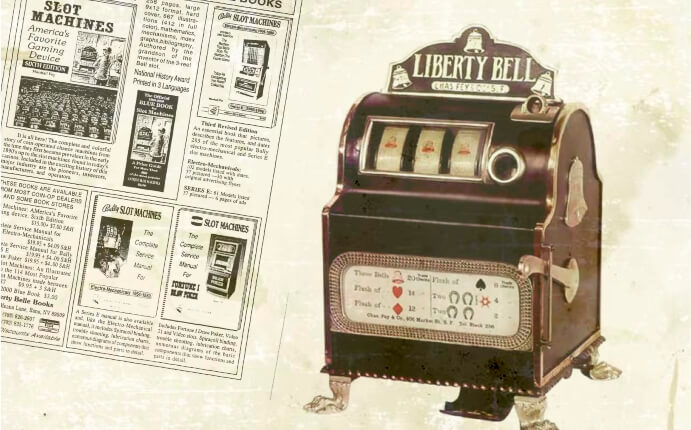
1800: Gambling in America
As Europeans settled in America, they also brought gambling there. That’s when the notorious gambling halls of the Wild West emerged, along with riverboat gambling (along the Mississippi River). This unregulated gambling environment led to the rise of faro, poker, and roulette.
1890s: First Slot Machine
Another cornerstone in the history of gambling is the invention of the first slot machine. It marked the beginning of automated gaming and payout, enhancing the fairness and efficiency of gambling games.
Sittman and Pitt invented the first slot machine in 1891 in New York. It had five drums, playing card symbols, and a winning combination. Players only had to insert a coin and pull a lever, waiting in anticipation and hoping to win. Let’s see what came next!
In 1895, the history of slot machines took a new turn – the Liberty Bell machine by Charles Fey. It had three spinning wheels and five symbols, indicating a win of three matching symbols. The highlight of this invention was the automated payout.
The simplicity of use and thrill of potential winning brought much popularity to slot machines. You could find them in saloons, bars, and casinos. So, gambling became accessible to a broader audience. Not least, it increased the profitability of this industry.
Today, I can safely say that slot machines are the symbol of the gambling industry.
20th Century: Viva Las Vegas
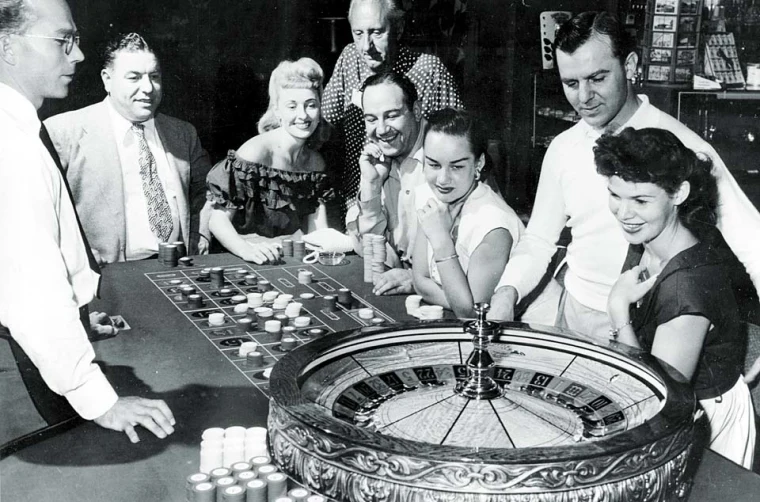
1931: The Capital of Gambling
The 20th century transformed gambling and the quiet town of Las Vegas into the world’s entertainment capital. Gambling has never been the same since Nevada legalized it. Did you know it was propelled by the need to stimulate economic growth amid the Great Depression? As a result, millions of visitors and gamblers went to Nevada, attracted by lavish casinos, entertaining resorts, and additional relaxation features, seeking winnings.
Interesting fact: the construction of the Hoover Dam brought workers and tourists to the area, increasing the demand for gambling. The development of mega-resorts in Las Vegas began with the Las Vegas Strip, the first-ever facility of its kind.
With such a thriving field, organized crime entered the game. Las Vegas attracted mob figures who infiltrated the field and operated casinos. That’s how the Nevada Gaming Control Board appeared to regulate the industry. So, fairness and integrity were more or less ensured.
1970s: Modern Casinos
A new era began for gambling. The evolution of modern casinos transformed the history of gambling. Gamblers witnessed a change of scenery in casino design, marketing, and management. In a few words, these were the casinos you know today.
First, the Corporate Gaming Act in Nevada allowed companies to own casinos, attracting corporate investment. It started with Howard Hughes, who helped legitimize the gambling industry by attracting investors.
Themed Casinos
In addition to more transparent and fair gambling, casinos developed into elaborate facilities hosting themed entertaining activities. Going beyond gambling, casino operators wanted to attract more visitors with their immersive ambiance.
Take, for instance, Caesars Palace with a Roman Empire theme (it isn’t coincidental after all if you know the origins of gambling). The new standard of luxurious casinos combined gambling with top-notch shows, dining, and shopping.
Or, think of Circus Circus – a family-friendly facility with a carnival environment that includes families.
In addition, casinos partnered with celebrities and hosted concerts and sports events to increase the appeal of their resorts and broaden their audience.
Technological Advances
The introduction of electronic slot machines provided more diversity in gaming options (compared with mechanical machines). New security systems delivered by advanced surveillance technology enhanced the integrity of casinos.
Cheating and fraud were no longer of concern to gamblers. This was definitely the decade of technological innovations in gambling.
Expansion of Casinos
Las Vegas has always been the center of gambling. However, casinos went beyond these borders. Gambling was legalized in Atlantic City, New Jersey. That’s how a new gambling center appeared on the East Coast.
The Digital Era History: Online Gambling
1990s: Online Casinos
In 1996, InterCasino, the first online casino, launched. Gamblers could play their favorite games from the comfort of their homes. A new era started. Of course, online casinos quickly gained popularity, expanding their range of games.
As a result, the Kahnawake Gaming Commission was established, which, together with the Free Trade and Processing Act passed by Antigua and Barbuda, provided licenses to online casinos.
2000s: Mobile Gambling
Enhanced internet connectivity and technology brought growth to online casinos. If you went through this period, you may recall the improved graphics and gameplay way ahead of their time.
Still, the biggest innovation was the evolution of mobile gambling. Players could access their favorite online casinos via mobiles or tablets on the go. That’s how mobile-friendly platforms started to be more popular. You no longer had to travel across the country and spend lots of money visiting a land-based casino. The convenience of mobile gambling is what made this industry more accessible than ever.
2010s: Live Dealer Games and Digital Payments
With the improvement of technology and the possibility to play from home, gamblers felt the lack of a real casino ambiance. So, providers developed live dealer games to enhance the effect, combining virtual with land-based gambling. The gambling experience improved considerably due to live video streams during which players could interact and feel the same real casino environment right from home.
The digital era also saw the rise of digital payment options. Transactions have become safer, faster, and more convenient. The key features are E-wallets (with services like Neteller and Paypal providing safe transactions) and cryptocurrencies (with Bitcoin and other digital currencies delivering decentralized transaction options that appeal to the large community of tech-savvy players).
Contemporary Gambling and Its Potential
2020s: Virtual Reality
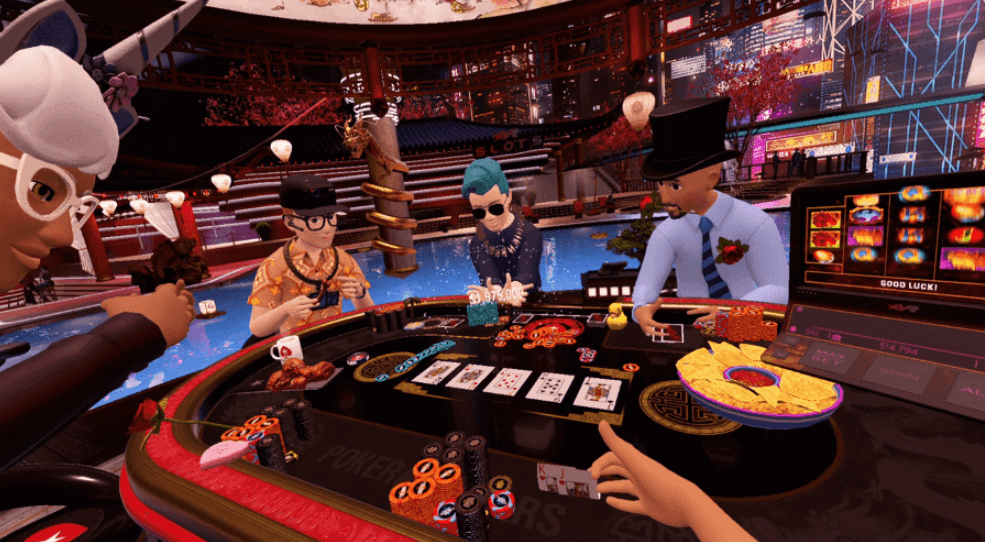
I’m glad you’ve made it so far. We’ve reached 2020 and, subsequently, contemporary gambling, which marks a new transformation. Now, you can experience immersive games that repeat the authentic casino environment up to the last detail.
Virtual Reality integrated into the gambling industry allows you to enjoy games on a whole new level by exploring real casinos and interacting with players. All this without leaving your home.
The Future of Gambling
Considering gambling’s rich history and the lengths it has gone to, you probably wonder what to expect next. So far, I see a potential combination of innovative features and regulation. Authorities worldwide are beginning to recognize the need for a solid regulatory framework to enhance the gambling industry through fair and transparent experiences.
As for technological advances, there are no limits. Artificial intelligence and blockchain technology are expected to bring even more appealing changes to the gambling field. All you have to do is wait and see!
From ancient dice of stone to contemporary virtual reality games, the history of gambling proves that people have always been eager to try their luck playing games of chance. More importantly, gambling has a separate share in shaping society and culture.
I am sure this long and captivating history of gambling was as interesting to you as it was to me. Next time you place a bet and wait in anticipation for the outcome, remember how long it took gambling to be where it is.
- Top 7 Play n Go Slots in Canada - October 1, 2025
- My Favourite Quickspin Slots to Play in 2025 - September 14, 2025
- Old-School Fun with Modern Wins? Try These Best Retro Slots - September 14, 2025



